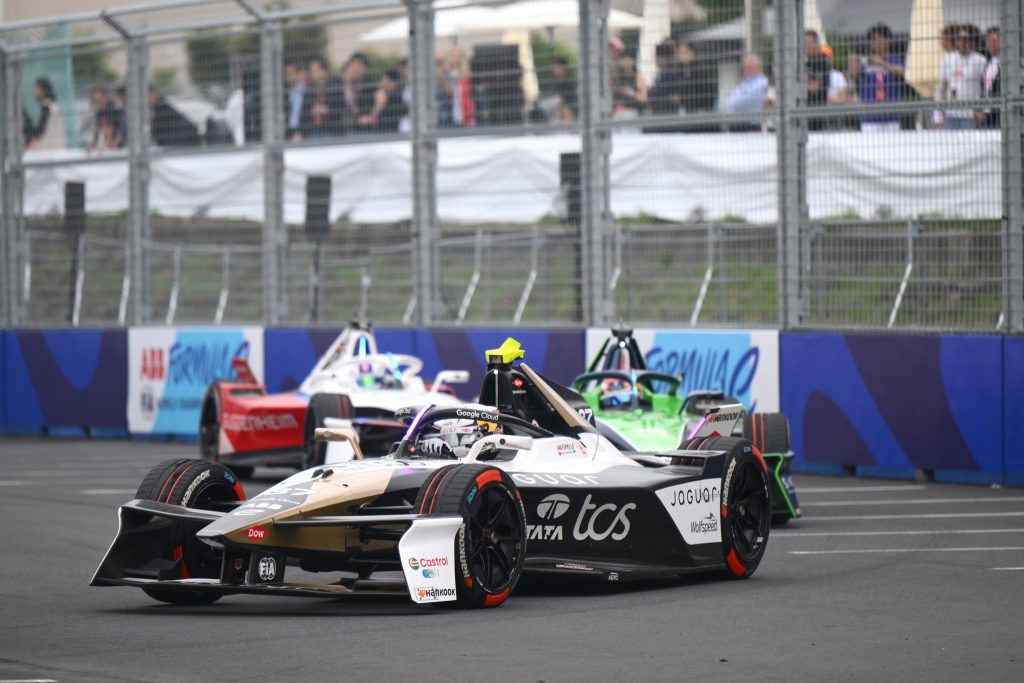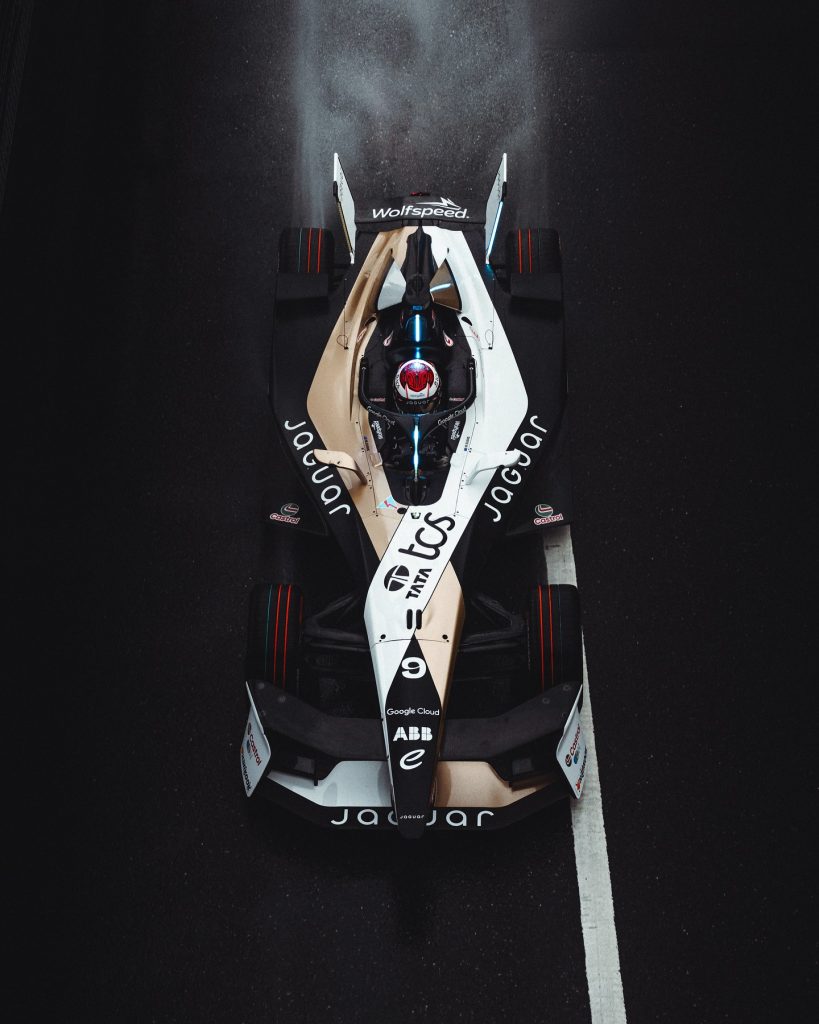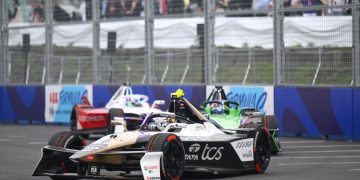The Tokyo Street Circuit served its fair share of drama in Round 9 of the 2025 FIA Formula E World Championship. It was a tale of triumph and tribulation for Jaguar TCS Racing’s Kiwi duo.
While Mitch Evans’ weekend was cut short after a heavy qualifying crash ruled him out of the race, teammate Nick Cassidy delivered a gritty, strategic drive to climb from 13th on the grid to a well-earned seventh-place finish.

Evans was hoping to bounce back from the misfortune of yesterday’s race, where contact with Nyck De Vries exiting the pit lane ended his race with terminal gearbox damage.
Qualifying:
Unfortunately Evan’s bad luck continued as the Kiwi was dealt another blow less than 24 hours later during Group A qualifying for Round 9. After setting the early benchmark with a 1:14.304s lap, Evans looked poised for a spot in the all-important Duels. Then, disaster struck.
With just three minutes remaining in the session, Evans lost the rear of his Jaguar through Turn 16 and slammed side-on into the wall. The impact sent one of his wheels flying—narrowly missing a track marshal—before the car came to a stop after making contact with the Techpro barriers in the run-off area at Turn 17.
The red flag came out, and under Formula E regulations, Evans’ best lap time was deleted as a result of causing the red flag. From a provisional Top 4 slot, he plummeted to 11th in the group, eliminating any chance of advancing.
Cassidy, meanwhile, had his own mountain to climb. Initially off the pace and struggling under braking, he made a late-session push to top the timesheets with a 1:14.106s briefly.
But as the final flying laps came in, Cassidy was steadily shuffled down the order, first by Jean-Eric Vergne, then Norman Nato, and eventually by Taylor Barnard and De Vries. In the end, Cassidy finished seventh in the group, just over two-tenths shy of progressing to the Duels.
As Oliver Rowland went on to secure pole position for Nissan, capitalising on a mistake from Dan Ticktum in the final duel, it became clear that Jaguar’s Saturday would start on the back foot. Cassidy would line up 13th, Evans 22nd… or so it seemed.
Round 9 Race:
In a gutting pre-race revelation, Jaguar Team Principal James Barclay confirmed that Evans would not take the start. The damage from the qualifying crash was too severe to repair in time, bringing the Kiwi’s weekend to a premature end.
That left Cassidy as the lone Jaguar representative on the Tokyo grid, and he wasted no time making his mark.
From the moment the lights went out, he began picking off positions, jumping ahead of Maximilian Günther on the opening lap to move into 12th. While others opted for early attack mode strategies, Cassidy bided his time, holding both of his activations in reserve as the race unfolded.
At the front, it was Ticktum who seized control after passing Rowland on Lap 8, while a tightly packed midfield jostled for position. Cassidy briefly slipped back to 14th but soon found his rhythm.
A full-course yellow on Lap 12—triggered by debris from De Vries’ front wing after rear-ending Sam Bird—reset the field and presented Cassidy with a golden opportunity.
Cassidy activated his first attack mode when racing resumed and launched a calculated charge through the pack. He surged past Sébastien Buemi, Jake Hughes, Vergne, Nato, Bird, and Lucas Di Grassi to rocket up to sixth place in a matter of laps. He then muscled past Rowland for fifth, before the Nissan driver retaliated to reclaim the position.

Cassidy still had his second attack mode up his sleeve. He activated it on Lap 22 and made another push, moving up to eighth before getting caught behind an “attack mode train”—a line of seven drivers all deploying their final power boost simultaneously, effectively neutralising opportunities to overtake.
As chaos erupted up front, with Rowland and Pascal Wehrlein trading blows for the lead and Barnard mounting a surprise bid for the podium, Cassidy held steady in the thick of it.
Then, in a shocking twist, Barnard was pitched into the wall with just three laps remaining after contact with Mortara. The resulting safety car brought the race to a temporary halt and set the stage for a one-lap shootout to the finish.
Rowland got the jump on the restart, bolting early and creating a gap on Wehrlein. Behind them, Ticktum applied pressure for second, but the order held as they crossed the line. Rowland claimed a home victory for Nissan, with Wehrlein and Ticktum joining him on the podium.
Cassidy crossed the line in seventh—an impressive result given his starting position and a reward for his measured aggression and intelligent energy management throughout the race.
While Jaguar’s hopes of a double-points finish were dashed with Evans unable to participate, Cassidy’s performance salvaged what could have been a disastrous weekend for the team.
In the unpredictable world of Formula E, resilience is as vital as outright speed. And in Tokyo, Nick Cassidy showed he has both in abundance.
Formula E takes a short break before returning for another double-header weekend, May 31st – June 1st, for Rounds 10 and 11 in Shanghai.
Header Image: Simon Galloway/LAT Images for Formula E















